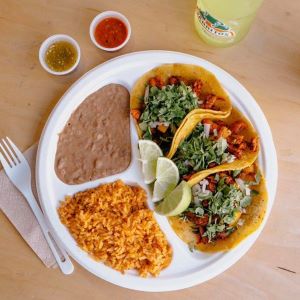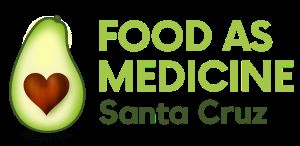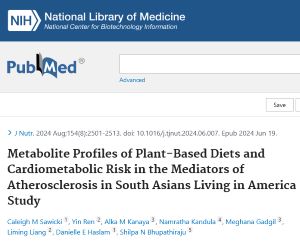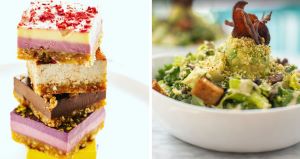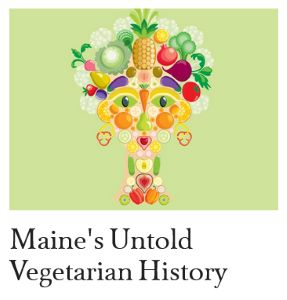Life Cycle Assessment of “Animal-Free” Whey: Part 4 on Precision Fermentation
By Jeanne Yacoubou, MS
Perfect Day was one of the first companies to introduce “animal-free” whey manufactured by precision fermentation (PF) to the market. In this article, we look at lifecycle assessments of its product that determine its environmental impacts and compare them to those of the dairy industry.
What is a life cycle assessment?
A life cycle assessment (LCA) is a systematic analysis of all the environmental impacts of a product, material, process, or service over the course of its entire life cycle from beginning to end. It considers all the natural inputs such as energy, materials, and water, as well as the waste products (waste materials, heat energy, waste water, and carbon emissions).
Which environmental impacts does an LCA consider?
Some of the major environmental impacts of a product, material, process or service that an LCA considers include:
- Carbon emissions
- Acidification of freshwater or marine environments
- Energy use and loss
- Eutrophication (the release of fertilizer runoff into waterways)
- Land use (including deforestation)
- Air pollution
- Resource depletion
- Water use
- Ecotoxicity (the release of toxins into the environment)
The VRG has looked at each of these environmental impacts of animal agriculture in previous articles on our Environment Page.
What is the purpose of an LCA?
An LCA is commonly used for quantifying the sustainability of something. When accurate, it provides useful insights that allow:
- Businesses to improve their products or services by making them more sustainable
- Policymakers to decide wisely about resource allocation, regulation, and use by businesses
- Shoppers to make more informed purchasing decisions.
What is involved in an LCA of “animal-free” whey?
In the case of a food ingredient like “animal-free” whey, its life cycle involves:
- Insertion of animal genes into microbial genetic material in a lab
- Manufacture of whey in a bioreactor (fermentation tank) running on electricity
- Production of agricultural products (corn, beet, or cane sugar, etc.) involving synthetic fertilizer and pesticides and later used in microbial growth media
- Packaging and distribution
- Processes used to manufacture foods containing the engineered whey (e.g., cheese, ice cream, margarine, etc.)
- End-of-life: Recycling or disposal of byproducts/co-products; landfill or incineration of packaging
What does an LCA say about sustainability?
The preceding section describes a linear model of production with a clear beginning and end. Usually, the end is a landfill. Thus, its name: a cradle-to-grave life cycle. Products with a clearly defined end point are not sustainable.
By contrast, a circular model of production, in which everything involved in creating a product is somehow reused, is sustainable. An LCA analyzing a product in this manner is called cradle-to-cradle. In a circular economy, the end-of-life phase becomes the start of a new life cycle of the same product, or one of similar or greater value (upcycling). A circular economy mimics nature. Nothing is wasted.
LCA by Perfect Day’s “animal-free” whey
The LCA that appears to be the latest, based on a comprehensive web search, is dated August 2021 and labeled Version 1. It is a cradle-to-grave assessment.
The report specifies that “the analysis does not include resource needs and environmental impacts embedded in infrastructure in either the primary data or secondary data collection efforts.” This statement means that not all energy used is included, nor are all environmental impacts taken into account. Because Perfect Day states that their primary data is proprietary, an independent researcher is unable to reproduce the study.
An important point to note about Perfect Day’s “animal-free” whey is that its engineered whey protein makes up only 21.7% of the biomass produced in each batch from the bioreactor. The remaining 78.3%, referred to in the LCA as a co-product, is not suitable as human food. The LCA says that Perfect Day’s non-whey component could be used as an “…ingredient in high-value domesticated animal pet food or as fertilizer, to applications in the pharmaceutical industry or as an alternative to leather…”
The LCA reports electricity usage of 13 kWh/kg of protein and a non-renewable primary energy use of 56.3 MJ/kg of product (equaling 15.6 kWh/kg of product). You should take into consideration that less than a quarter of the output is the desired end product (whey). The LCA does not include the energy costs involved in building
A peer-reviewed article by Behm and colleagues published after the Perfect Day study reaches different conclusions and raises questions about it. The investigators conclude that the energy needed to manufacture the Perfect Day protein – which they refer to as rBLG for recombinant bovine lactoglobulin – is comparable or higher than what is needed to produce the same quantity of cow’s milk.
Peer reviews and dairy industry ties in LCAs
The LCA referenced in the preceding section by Behm et al. showed the process used to produce cow’s milk and extract whey from it took less energy than that needed to manufacture genetically engineered whey in a bioreactor. Although that study had been peer-reviewed and shown to be accurate, it’s relevant to note some authors had financial interests in presenting findings that put the dairy industry in a good light.
The Perfect Day study, although completed by an independent lab, had not been peer-reviewed. The lab reported transgenic whey production required fewer non-renewable energy sources than those required to produce conventional cow’s milk. But, as far as we could tell, this energy is from the fermentation step only. Energy needed to grow the components of the growth media, using energy-intensive fertilizers and pesticides, was not included. Also excluded were energy costs associated with manufacturing and maintaining the solar panels used for renewable energy generation. Perfect Day’s LCA states that their energy use is based only on the whey-equivalent protein and not on their entire bioreactor output.
The LCA says that Perfect Day’s non-whey component could be used as an “…ingredient in high-value domesticated animal pet food or as fertilizer, to applications in the pharmaceuticals industry or as an alternative to leather…”.
These conclusions on energy use in the Perfect Day study differ from the peer-reviewed study cited previously. To date, there are only two peer-reviewed studies we know of analyzing the environmental impacts of Precision Fermentation compared to those of the dairy or egg industry. Besides the Behm, et al (2022) study mentioned above, there is another by Jarvio, et al (2021) looking at egg protein. That study concludes that Precision Fermentation could be less resource-intensive than commercial egg production, but it depends on the source of energy – and of other critical resources like water. Since energy use is a major part of environmental footprint calculations, it appears more likely that genetically engineered dairy and egg analogues may only cause less environmental impacts than food from animals in cases where renewable energy sources are exclusively used.
What do these energy calculations mean for vegans?
A major reason people choose veganism is the efficiency argument. This refers to the fact that it’s considerably less wasteful of grains – and the energy and water needed to grow them – if humans consume them directly rather than feeding the grains first to livestock followed by eating their meat and dairy. The latter process results in huge losses due to the inefficiency of converting grains to meat. You can read more about this in an earlier VRG article.
It’s noteworthy in this discussion of energy use in food production that modern supply chains needed to mass produce intensively-reared meat in confined animal feeding operations (CAFOs) depend entirely on cheap fossil energy. Since approximately 28% of global carbon emissions driving the climate crisis is caused by animal agriculture (including deforestation to grow animal feed and raise cattle), as we noted in our article on veganic agriculture, eliminating that industry by universally going vegan would result in a drastic reduction in energy consumption and an immediate decline in carbon emissions, including more potent methane from burping bovines. As of now, there is conflicting research and opinions how precision fermentation fits into this.
The contents of this posting, our website, and other publications, including Vegan Journal, are not intended to provide personal medical advice. Medical advice should be obtained from a qualified health professional. We often depend on product and ingredient information from company statements. It is impossible to be 100% sure about a statement, info can change, people have different views, and mistakes can be made. Please use your best judgment about whether a product is suitable for you. To be sure, do further research or confirmation on your own.


